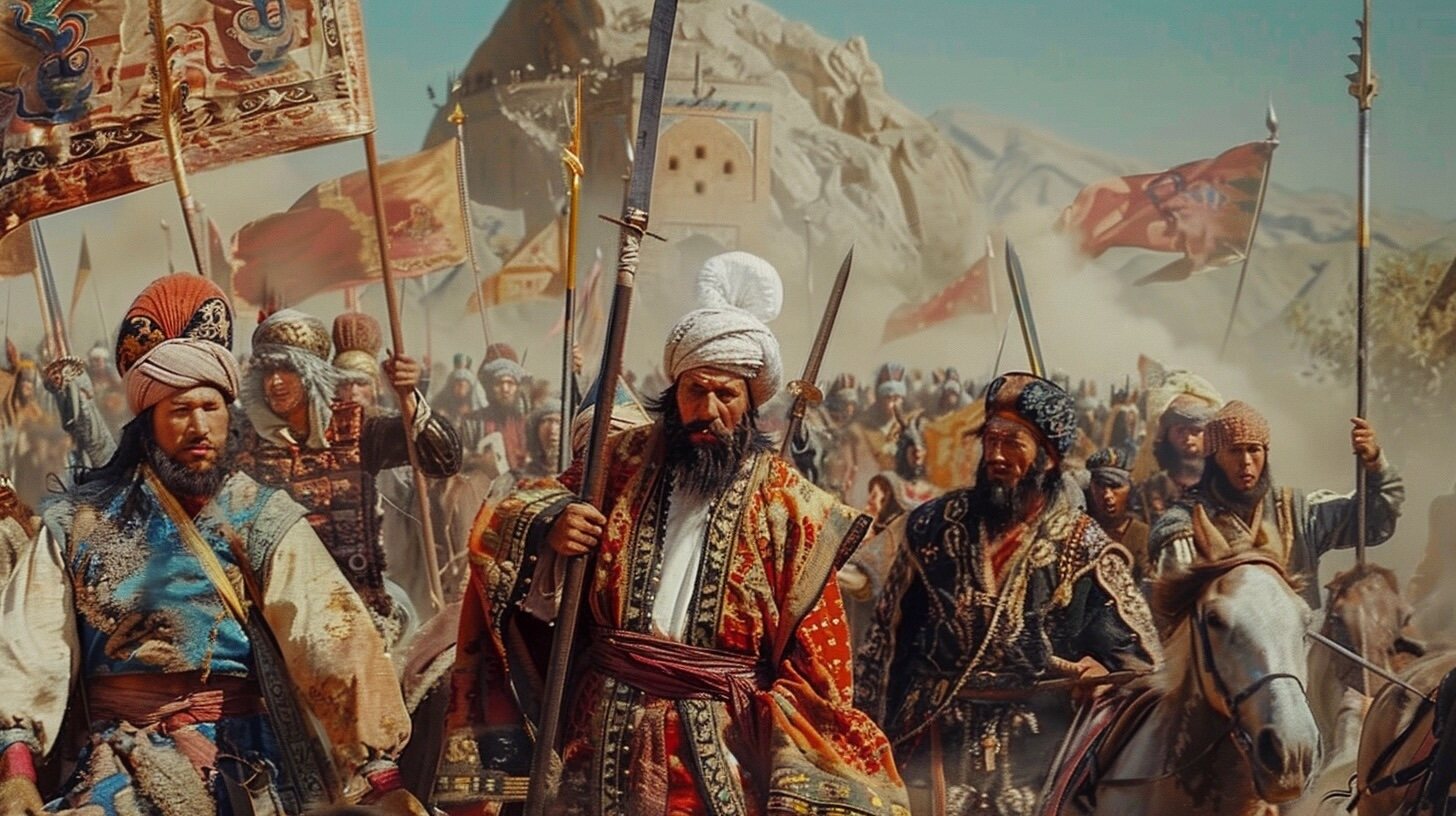
The Afaqi Khoja Revolts were a series of uprisings in the 17th and 18th centuries in what is now Xinjiang, China. These revolts were led by the Afaqi Khoja family, a prominent Sufi order, against the ruling Qing dynasty. Why did these revolts happen? The Afaqi Khojas sought to reclaim their lost power and influence in the region. They were driven by religious fervor, political ambition, and a desire to resist foreign rule. The revolts had significant impacts, including altering the region's political landscape and affecting the lives of many. What can we learn from these revolts? Understanding these events helps us grasp the complex history of Xinjiang and the enduring struggle for power and identity in the region.
Key Takeaways:
- The Afaqi Khoja Revolts were a series of uprisings in 18th century China led by a powerful Muslim family, shaping the region's history and leaving a lasting impact on Xinjiang's political and social landscape.
- Key figures, pivotal battles, and long-term effects make the Afaqi Khoja Revolts a significant part of Xinjiang's history, remembered for their resistance against foreign rule and their influence on the region's culture and society.
The Afaqi Khoja Revolts: An Overview
The Afaqi Khoja Revolts were a series of uprisings in the 18th century led by the Afaqi Khoja family against the Qing Dynasty in China. These revolts were significant in shaping the history of the Xinjiang region. Here are some fascinating facts about these historical events.
- The Afaqi Khoja family was a prominent Sufi Muslim family in Xinjiang.
- The revolts were primarily driven by religious and political motivations.
- The Afaqi Khojas were descendants of the famous Sufi saint, Ahmad Kasani.
- The family had a strong influence over the local Muslim population.
- The revolts were part of a larger struggle between the Afaqi and Ishaqi Khoja factions.
Key Figures in the Revolts
Several key figures played crucial roles in the Afaqi Khoja Revolts. Their leadership and actions significantly impacted the course of these uprisings.
- Khoja Jihan, a prominent leader, led the first major revolt in 1755.
- His brother, Burhan-ud-Din, also played a significant role in the uprisings.
- The Qing Dynasty's response was led by General Zhaohui.
- The Afaqi Khojas received support from neighboring Central Asian khanates.
- The revolts saw the involvement of various local tribal leaders.
Major Battles and Conflicts
The Afaqi Khoja Revolts included several significant battles and conflicts that shaped the outcome of these uprisings.
- The Battle of Aksu in 1758 was a pivotal conflict.
- The Siege of Kashgar in 1760 marked a turning point in the revolts.
- The Battle of Yarkand saw heavy casualties on both sides.
- The Qing forces employed advanced military tactics to suppress the revolts.
- The Afaqi Khojas used guerrilla warfare to their advantage.
Impact on the Region
The Afaqi Khoja Revolts had a lasting impact on the Xinjiang region, influencing its political and social landscape.
- The revolts led to significant population displacement.
- The Qing Dynasty implemented stricter control over the region.
- The local economy suffered due to the prolonged conflicts.
- The revolts intensified ethnic tensions in Xinjiang.
- The Afaqi Khoja family lost much of its influence after the revolts.
Legacy of the Afaqi Khoja Revolts
The legacy of the Afaqi Khoja Revolts continues to be felt in the region today, with their historical significance still recognized.
- The revolts are remembered as a symbol of resistance against foreign rule.
- They have been the subject of numerous historical studies and research.
- The Afaqi Khoja family is still revered by some local communities.
- The revolts have been depicted in various forms of art and literature.
- The events of the revolts are commemorated in local folklore and traditions.
The Legacy of the Afaqi Khoja Revolts
The Afaqi Khoja Revolts left a lasting mark on Central Asian history. These uprisings, driven by religious fervor and political ambition, reshaped the region's power dynamics. The Khojas, with their blend of spiritual leadership and military prowess, challenged the established order, creating ripples that influenced subsequent events.
Understanding these revolts offers insights into the complexities of Central Asian politics and the enduring impact of religious movements. The Afaqi Khojas' legacy is a testament to the power of belief and the lengths people will go to defend their ideals.
For history buffs, these revolts are a fascinating chapter, rich with lessons about resilience, strategy, and the interplay between faith and power. The Afaqi Khoja Revolts remind us that history is not just about dates and events but about the people who shaped the world we live in today.
Frequently Asked Questions
Was this page helpful?
Our commitment to delivering trustworthy and engaging content is at the heart of what we do. Each fact on our site is contributed by real users like you, bringing a wealth of diverse insights and information. To ensure the highest standards of accuracy and reliability, our dedicated editors meticulously review each submission. This process guarantees that the facts we share are not only fascinating but also credible. Trust in our commitment to quality and authenticity as you explore and learn with us.
